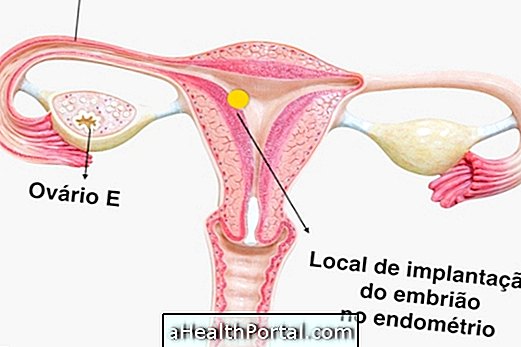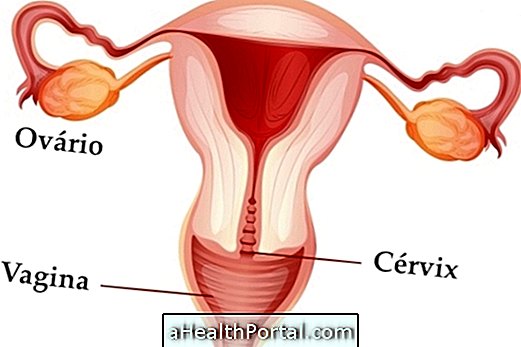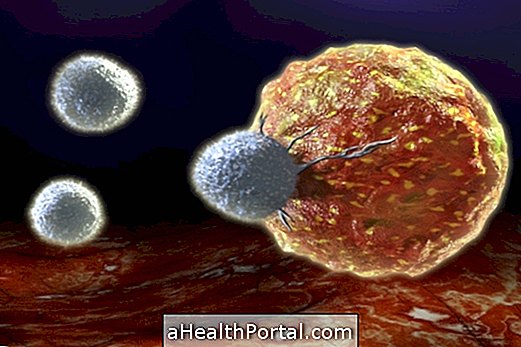Treatment to increase the thickness of the endometrium involves the use of hormonal drugs such as estradiol and progesterone. This type of treatment is indicated for women with atrophic endometrium measuring from 0.3 to 6 mm and that is why they can not conceive naturally.
These drugs increase the endometrial thickness, allowing implantation of the embryo in the uterus, thus allowing pregnancy. However, many physicians argue that as much as the thickness of the endometrium is receptive, since many women are able to get pregnant with a 4-mm endometrium, so the use of medications is not always necessary.

Remedies to increase the thickness of the endometrium
The remedies that may be indicated to increase the thickness of the endometrium are:
- Sildenafil (Viagra)
- Pentoxifylline (Trental)
- Acetylsalicylic Acid (Aspirin)
- Estradiol (Climaderm)
In women who do not have other fertility problems the use of these drugs is very effective in getting pregnant and there are cases of women who have been able to get pregnant with less than 3 drug cycles. But when there are other problems related to infertility, this period may be longer or it may be necessary to resort to in vitro fertilization.
Natural ways to increase the endometrium
There is no natural treatment that is able to increase the thickness of the endometrium, but it is believed that the consumption of yam tea has this capacity as well as flaxseed and red raspberry tea. However, there are still no studies that prove their effectiveness and safety and therefore are not indicated as a form of treatment.
For what purpose and endometrium
The endometrium is the tissue that internally coats the uterus and is responsible for harboring and nourishing the embryo, which is the result of the encounter between the mature ovum and the sperm. This encounter usually occurs in the fallopian tubes and thanks to the presence of tiny eyelashes present in this region, move to the uterus, being attached to the endometrium where it can develop until fully formed for birth.
In addition, the endometrium is also important for the formation of the placenta that will carry oxygen and all the nutrients needed for the baby.
For ovulation to occur an endometrium of at least 8 mm is required, so when the woman does not reach this size, she does not ovulate and consequently becomes more difficult to conceive. Learn more about endometrial and its most common diseases.
How to know the size of my endometrium
The only way to know the size of your endometrium is through ultrasound, but as this tissue changes size throughout the menstrual cycle it is important to perform this exam in the middle of the menstrual cycle, which is where the fertile period is supposed to happen, which is when the endometrium is at its greatest thickness.
To achieve pregnancy, it is important that the endometrium after fertilization is at least 8mm thick. This size can be observed on a uterine ultrasound examination requested by the physician. When this layer is less than 8 mm thick, the doctor may suggest the use of drugs that are capable of 'thickening' this layer, such as vasodilators, platelet and hormonal antiadherents.
Causes of Endometrial Decrease
The endometrium changes thickness naturally during each menstrual cycle, but during the fertile period the woman is expected to have a thickness between 16 and 21 mm, although it is already possible to keep the embryo with only 8 mm. But women who have an even finer layer, can not get pregnant because the endometrium is not enough to nourish the embryo, ensuring its growth.
Some causes for this decrease of the endometrium are:
- Low concentration of progesterone;
- Presence of pelvic inflammatory disease;
- Use of hormonal contraceptive methods;
- Injuries to the uterus after curettage or abortion.
Some signs that may indicate endometrial atrophy are irregular menstruation, history of difficulty getting pregnant, or miscarriage.




















